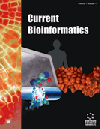
Full text loading...
We use cookies to track usage and preferences.I Understand

The 5' UTR plays a crucial role in gene regulation, which may be through its interaction with introns. Hence, there is a need to further study this interaction.
This study aimed to investigate the interactions between 5' UTR and introns and their correlation with species evolution.
The optimally matched segments between 5' UTR and introns were identified using Smith-Waterman local similarity matching, and the biological statistical methods were applied to compare the optimally matched segments between different species.
The interactions between 5' UTR and introns were found to be primarily mediated by weak bonds and demonstrated a directional change with species evolution. Additionally, a large proportion of the optimally matched segments were very similar to miRNA and siRNA in terms of length and matching rate characteristics.
The weak bonds in the interactions between the 5' UTR and the introns could enhance the flexibility of expression regulation, and an important correlation was found between the characteristic distributions of the optimally matched segments and species evolution. Additionally, the length and matching rate of a large proportion of optimally matched segments were very similar to those of miRNA and siRNA. In conclusion, it is highly probable that quite a few of the optimally matched segments are some kinds of functional non-coding RNAs.

Article metrics loading...

Full text loading...
References


Data & Media loading...